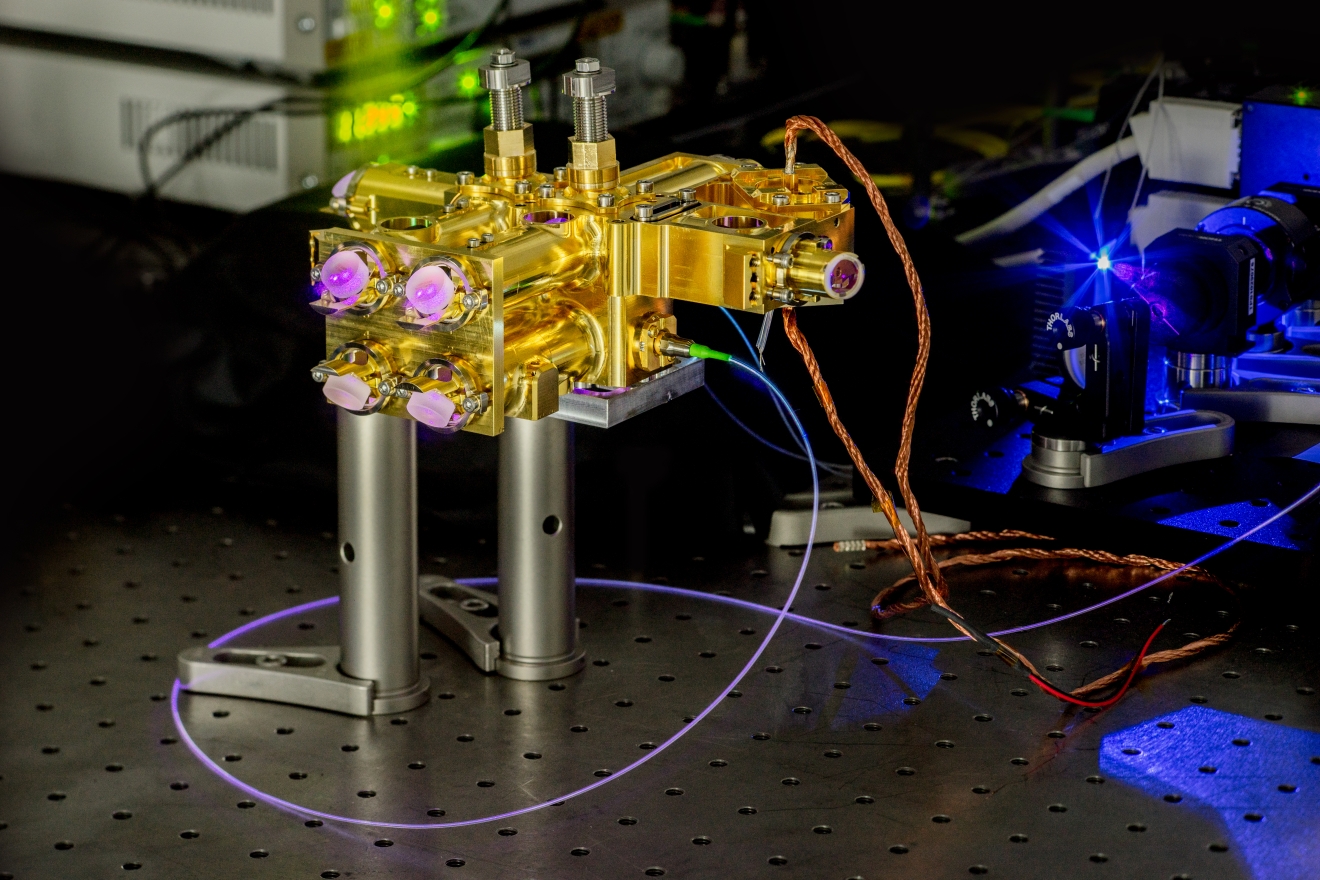
Quantum cryptography will be a hot topic in secure communication in the near future. So far, scientists have shown its feasibility in the research lab. Now, it is time to move the idea from the lab into the real world. Experts from the Fraun-hofer Institute for Applied Optics and Precision Engineering IOF in Jena, Germa-ny, are working on new photon sources for space.
Quantum communication is inherently safe due to the quantum nature of the proce-dure. First, a pair of twin photons is generated. Their quantum states are unknown but related. If one photon is measured, then its state is fixed. At the same moment, the state of the second photon is fixed, too, no matter how far it is away.
Erik Beckert of Fraunhofer IOF comments, “That’s weird, but this way, any eavesdrop-ping on one side leads to a change of both photons and is detectable. Therefore, quan-tum communication is not actually safer than other technologies. But you can always see if a third party is listening.”
Hence, such twinned or “entangled” photons can be used for secure encryption. A quantum photon source may send a series of photons to one or two receivers through fibers or free space, and after some processing, the series may serve as a key for the encryption of the actual message. This is called quantum key distribution (QKD), and it has already been demonstrated in laboratories and even in free space.
“Now we want to turn this concept into a reliable device for space missions,” says Beckert. In particular, the telecommunications industry has shown interest in such a robust solution, as a satellite-based QKD system would be very beneficial for them. From up in space, a quantum device could send the key sequence to two points on the ground and enable secure communication between them.
What it needs to get into orbit
The experts from the Fraunhofer Institute for Applied Optics and Precision Engineering IOF in Jena, Germany, are developing a new satellite-based source for entangled pho-tons. Funded by ESA’s ARTES 5.2 program, they are transforming ideas from research at the word-famous Institute for Quantum Optics and Quantum Information (IQOQI) in Vienna, Austria, into an engineering qualification model. Furthermore, they are work-ing on special adaptive optics for ground- and space-based optical terminals. Using a concept currently applied in astronomy, these optics compensate for atmospheric blur.
Early in 2017, the Telecommunications and Integrated Applications (TIA) directorate of ESA started the ScyLight initiative. ScyLight stands for “SeCure and Laser Communica-tion Technology.” The initiative will support the research and development of new optical communication technologies such as quantum communication. It will also pro-vide flight opportunities for the in-orbit verification of the new technologies.
At the Paris Airshow, the Fraunhofer IOF presented several different components of their space technology. Currently, these components are undergoing harsh durability tests. Each of the precious optical components has to withstand vibrations of 25 g and thermal loads from about -30 to 50°C.
The test of the engineering qualification model of the new source for entangled pho-tons was completed in June 2017. If funded through ScyLight, the team from the Fraunhofer IOF will work on the flight model next. QKD technology will be part of a new generation of space-based laser systems that will allow faster and more secure communication among satellites and between satellites and ground stations.